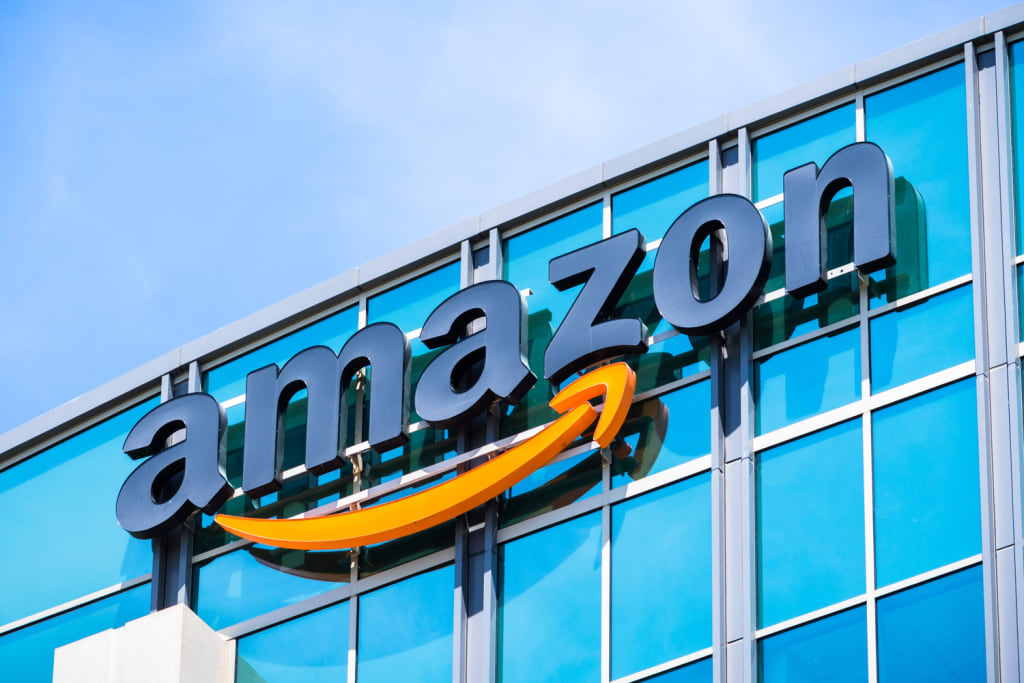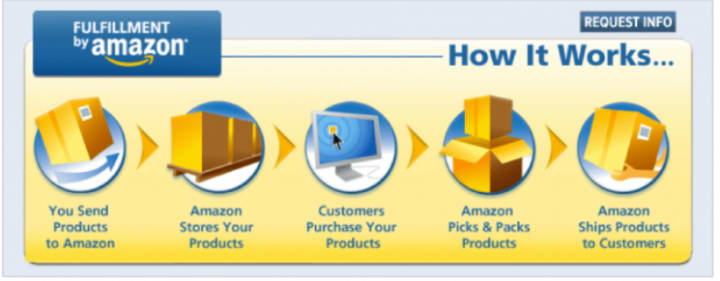
Buying shit on Amazon is ridiculously easy. It's so fast, and incredibly convenient! However, Amazon has done an excellent job at separating us consumers from the exploited and abused workforce that they depend on.
Now the United States’ second-largest private employer, Amazon employs nearly 1 million workers at its domestic warehouses. This growth has increased exponentially in the last year, and is becoming an increasingly global problem - oozing out from within the picking factories and drivers’ cabs, increasingly poisoning the communities exposed to Amazon’s processes.
This article isn’t to say you should boycott Amazon; it’s to give you a cohesive, down-to-earth view on the regular people that amazon exploits for our benefit.
So, let’s follow the journey your package took from Amazon!

Step 1. You buy a thing.
The products that you see when searching - and therefore the options you choose to purchase - is heavily governed by Amazon itself. Search rankings are serious business.
And Amazon knows as much, prioritising its own products wherever possible.
For example: The Markup found an Amazon-owned cereal with four stars and over 1,000 ratings. This product appeared higher in search rankings than, for example, a competitor with five stars and over 14,000 ratings.
Amazon isn’t afraid to throw its weight around, either: Hachette, a large publisher, was recently in a dispute with Amazon over the contract for selling Hachette's e-books. In response, Amazon de-prioritised their listings; throttled shipments of books from Hachette authors; raised their prices, and generally dissuaded customers from purchasing Hachette.
Furthermore, we've been kept totally in the dark: only 17% of Amazon users think the platform prioritises its own products.
Throughout your purchasing process, your personal data is recorded - the safety and quantity of which falls foul of European GDPR laws - to the tune of a $886 million fine last year.
So, you’ve purchased something. What next?
Step 2. Amazon picks & packs
Amazon’s relentless focus on speed has come at the cost of much physical pain. The safety crisis has been consistently whitewashed since the first reports in 2019. Nowadays, facilities such as Portland’s PDX9 centre see 25 out of 100 workers injured per year - a whopping 6 times the warehouse industry average.
These injuries range from muscular sprains; crushing injuries; to slips, trips and falls. The break-neck pace of work means that workers are not only highly likely to get hurt, but they are given inadequate time to recover. May Chloe Robinson suffered from a dislocated kneecap in an Amazon facility, making her unable to work for a period of time. Amazon refused to compensate her. She describes the effects as:
“I have not had a single day that I haven’t been an absolute sobbing mess because of the stress Amazon continues to put me through”.
This inhuman approach to their packing centre staff was pushed to the extreme in December 2021. A tornado, ripping through Illinois, was approaching an Amazon depot.
The workers, under the suffocating weight of quotas, were instructed to stand their ground.

Larry Wirden was one of the 6 that died that day. All so someone's fidget spinner arrived the day after they ordered it.
These inhuman attitudes are felt throughout every single day.
Testimonials from staff:
Everyone is so tired, all the time. Dark eye circles, muttering under yawns, all. There could never be "lifers" here. Not at this pace anyway. When there are so few long-lasting employees around, it kind of goes unsaid that other smart people like you can find a better situation elsewhere and move on. You cannot help but start looking within a few months. So the proof is in the other people you see in the hallways every day. It is always "Meet Bob, he's the new Jim" and I had no idea Jim was gone. You are told all the time of really great people who leave without so much as a goodbye email. To me that's crazy and a big problem.
And:
When we clock out, we have to be clocked out for a full 30 minutes… Of course, they don't want you to stop scanning items until one minute before your lunch, and you have to be at the "standup" meeting within 4 minutes of the end of the normal lunch break. The way pickers at my location have gotten around that...is to grab the last item they intend to scan, about three minutes before the start of break, get as close as possible to the front of the floor they're working on, then scan it exactly one minute before break starts. This gives a little extra time to put away the pick cart and make it down to the break area, without management tracking you down and asking why you stopped picking three minutes before break.
It's your prime-delivered kitchen stuff that moves through the hands of these people, 24/7.
Step 3. It ships!
The harsh, inhumanly tight delivery schedule is the final chapter on this journey of exploitation.
The bleak humour here stems from the fact that this information was leaked shortly after the official Amazon Twitter account tweeted a snarky:

Turns out it was far worse than just peeing in bottles! It's long been known that drivers have resorted to pooping in bags, in order to hit their package quotas.
The relentless pressure continues when even off the road. Amazon, in its quest for total bodily control over its employees, recently implemented AI cameras in the cabs.
These measure location (fair enough) and biometric data, crushing workplace lorry and breathing human into one singular, company-operated machine.
The biometric data was for facial recognition - one implementation, for example, would monitor when a driver starts to yawn too much. This, indicating tiredness, would pull up a safety issue.
Dont want your every facial movement recorded by your employer? Enjoy being unemployed!
From the warehouses to the lorries, Amazon's constant restriction of the human body into measurable, optimisable machines is not only dystopian as fuck - but also terrifying.
The usual medicine for sub-human conditions is a Union. And, unsurprisingly, Unions were quick to bubble underneath the surface for millions of knackered, anxious, overworked staff.
This was on the mind of Daequan Smith in November 2021. He worked to open up a conversation around Union power in his New York warehouse, and a buzz sprung up around worker's (lack of) respect.
At the cusp of a breakthrough employee vote on Union involvement, however, Smith found himself fired from Amazon.
Now? He's under threat of homelessness.
As Amazon continues to crush employees under its multi-billion dollar weight, and Unions battle against the behemoth, it's vital to know where we stand in this struggle.
The choice to support Amazon is one that only you can make. However, as us consumers start interrogating our own consumer impact, Amazon's gargantuan presence is a grisly shadow of Victorian-era workplace slavery.
About the Creator
Rk.ke
Follow the Omnishambles






Comments
There are no comments for this story
Be the first to respond and start the conversation.